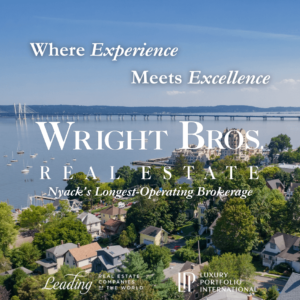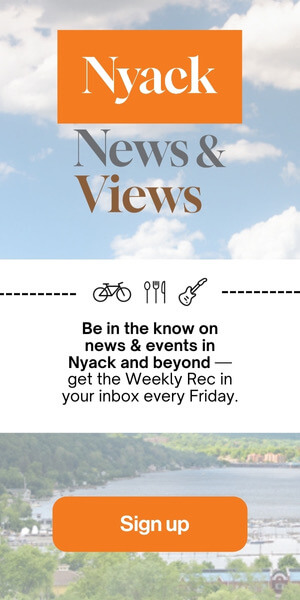The buzzing whine of propeller planes and the rev of small engines once filled the skies above West Nyack. In the 1940s, a swath of Greenbush Swamp—where the Palisades Mall now sprawls—was transformed into Miller Airport. The Miller family, owners of the nearby Miller Dairies, had ambitious plans. They built what would become Rockland’s fastest-growing airport, also known as the New York City Light Plane Terminal.
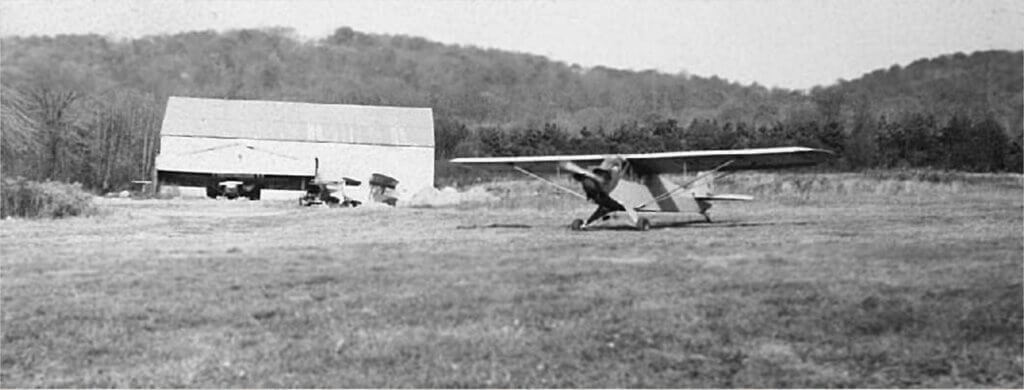
It was one of many small airfields in Rockland County, but Miller Airport stood out. After World War II, interest in aviation soared—especially among veterans funded by the GI Bill. Garret Miller Sr. owned the land. His son Garret Jr.—called Gary—learned to fly in 1940 and later earned certification as a flight instructor. During the war, he trained Army pilots. His twin brother Howard, and even Garret Sr., eventually took to the skies as well. While it was very much a family venture, Gary ran the flight school.
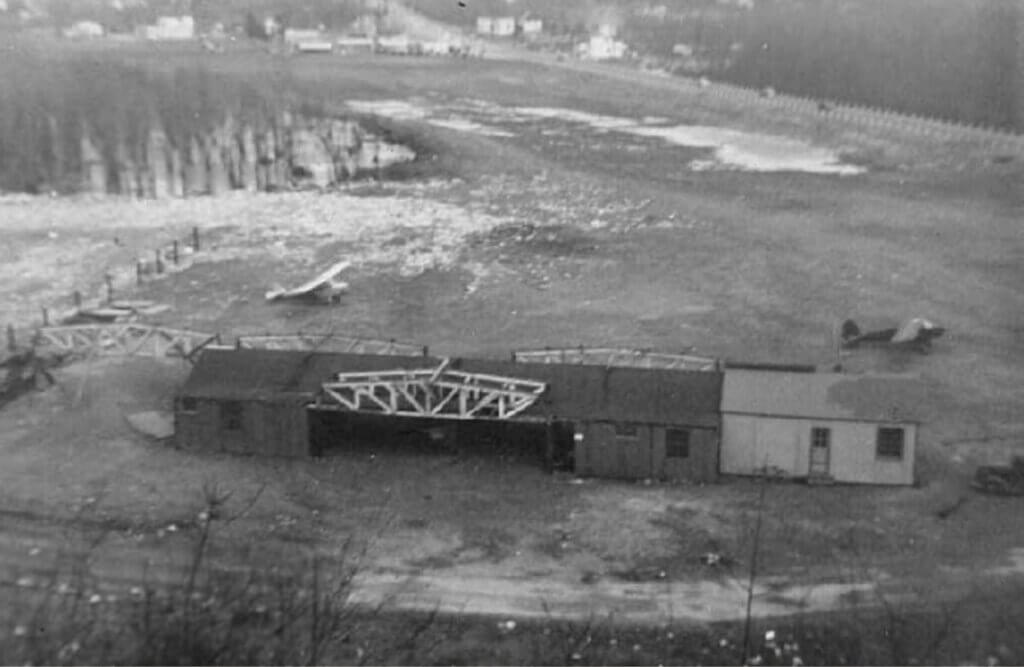
But not everyone shared their excitement. Residents along Greenbush Road were less than thrilled. One woman complained that oil from passing planes dripped onto her laundry. Others feared accidents, though few ever occurred. Still, the specter of airport expansion loomed large. While business-minded villagers praised the Millers for developing the marshy land, opposition grew. Everything came to a head in 1952. Zoning approval was denied, and the airport was shut down for good.
Establishing The Miller Airport
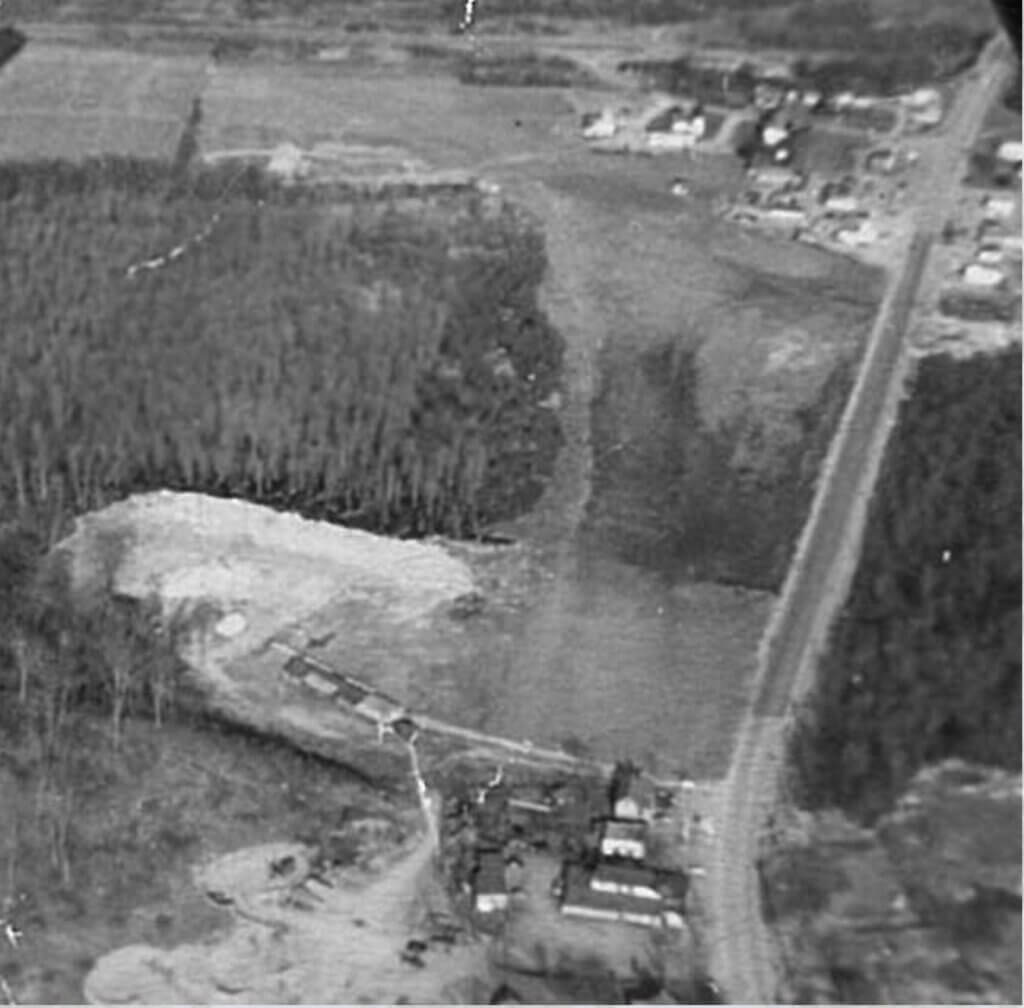
Opened in 1940, the airport grew quickly. It eventually boasted two runways: one stretched 2,300 feet, the other 1,800. A hangar housed planes, while others were tied down outdoors. By 1946, 12 aircraft called the field home. The site also featured a mechanic’s shop licensed by the Civil Aeronautics Board, a pilot’s lounge, and an office. Just down the road, the Miller Dairy opened Miller’s Milk Bar, serving meals to hungry flyers.
“Miller Airport, Crosley Car Agency, the Miller’s Milk Bar with ice cream, work out a perfect combination”
Journal News August 8, 1949
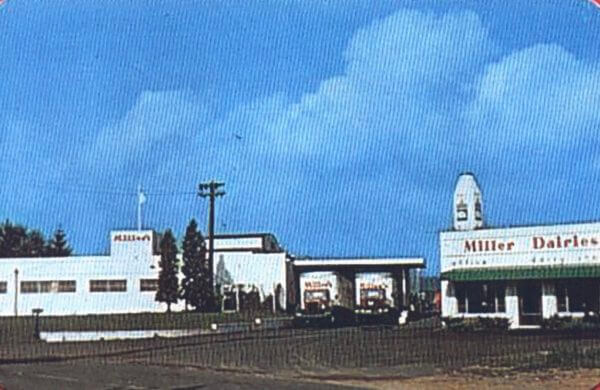
Flight lessons were especially popular. More than 60 veterans earned their wings here in 1946 alone. But it wasn’t just a boys’ club—Lois Holliday of Nyack, a student at Pratt Institute, was the sole woman in training. Meanwhile, the Bergen County Civil Air Patrol kept a plane at the field and conducted air maneuvers on site.
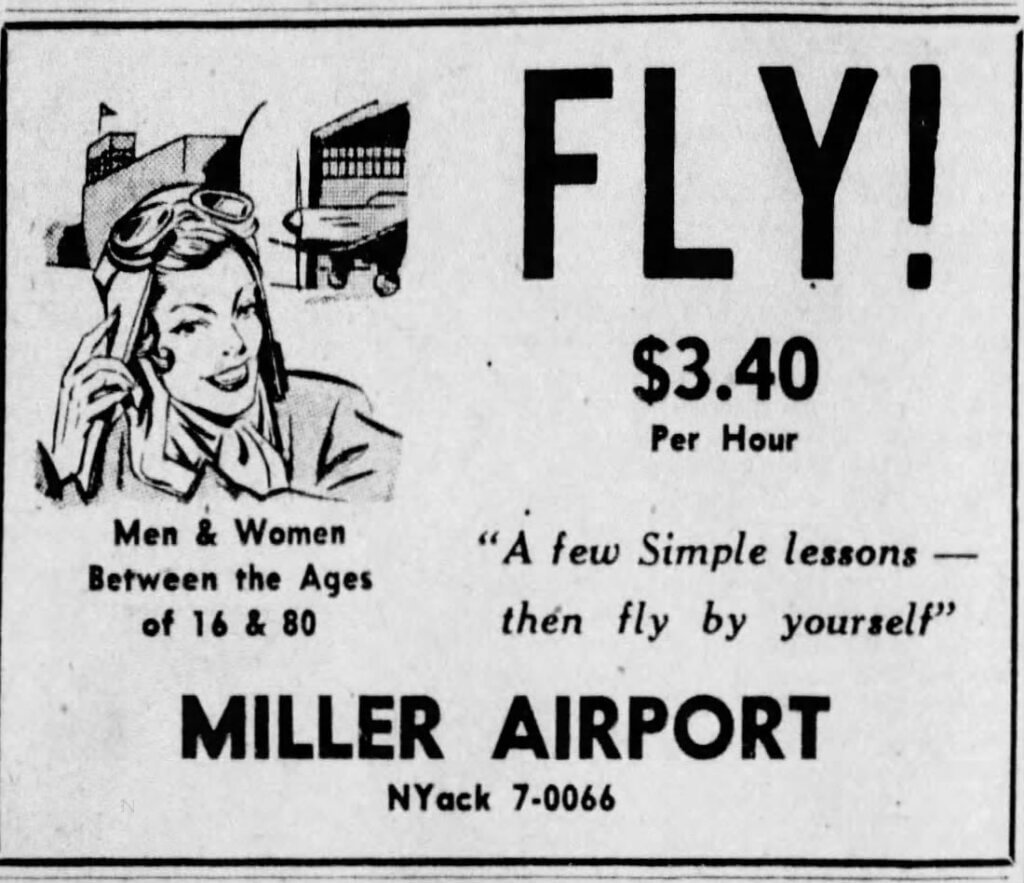
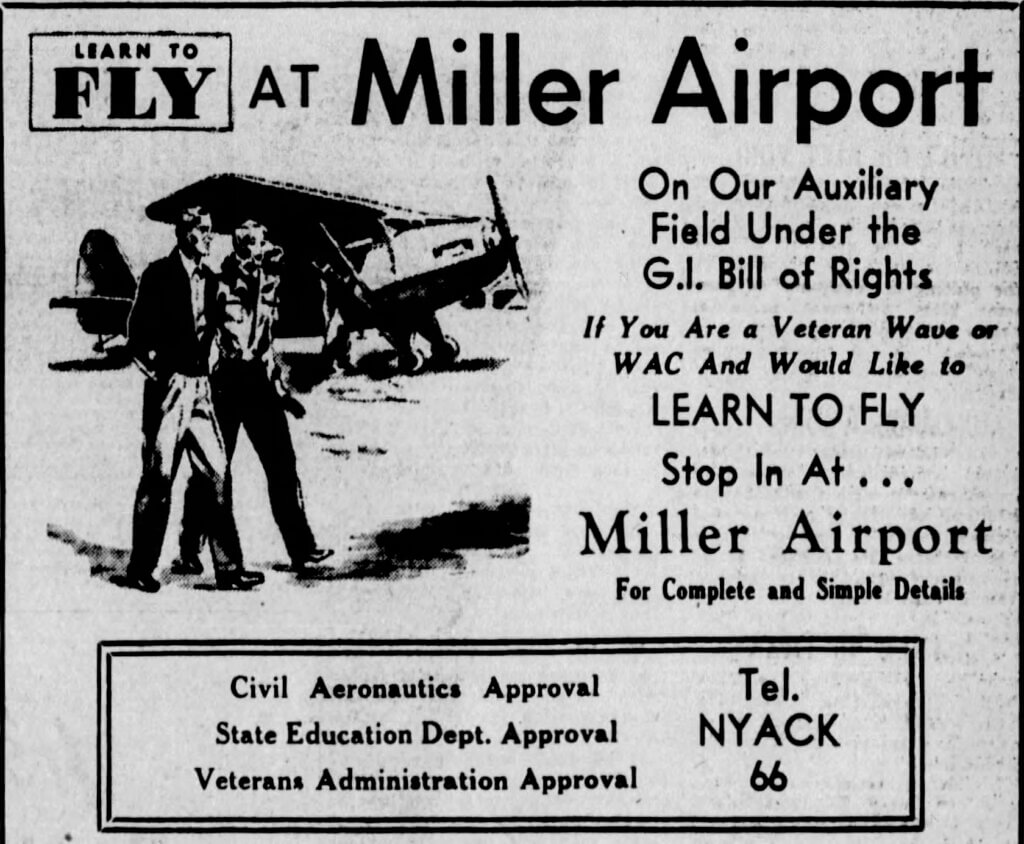
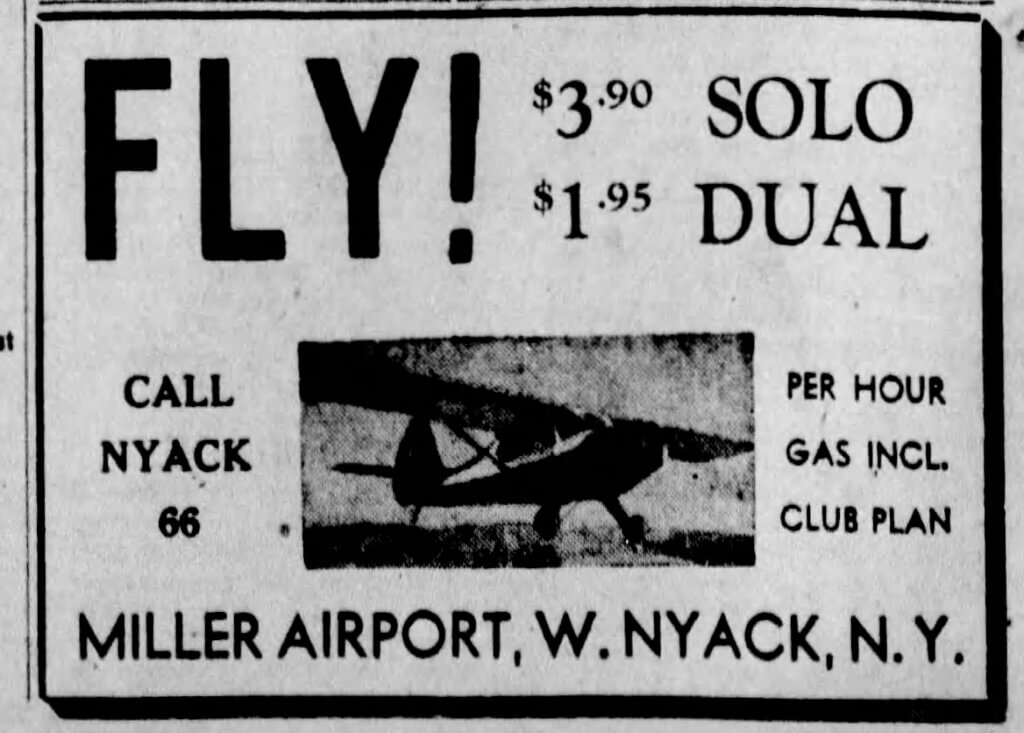
The Millers weren’t just teaching people to fly—they were also selling planes. As dealers for Aeronca and Stinson, two big names in postwar general aviation, they did brisk business. They also offered an air ambulance service, chartered flights, and express package pickups from LaGuardia and Newark. Private pilots appreciated the freedom of landing without radio equipment—as long as they followed the direction of the wind tee on the runway.
The Miller Family
Garret Miller Sr., the son of a German immigrant, settled in Valley Cottage around 1900. He launched his second dairy farm in West Nyack in 1937. He and his wife raised three children, including twins born in 1913. Garret Jr.—Gary—would go on to teach Army aviators during World War II in preparation for the D-Day invasion. One of his notable civilian students? Actor Henry Morgan, who later portrayed Colonel Potter on M*A*S*H. Others followed, drawn by Gary’s skill and reputation.
A Short Note on Nyack’s Other Airports
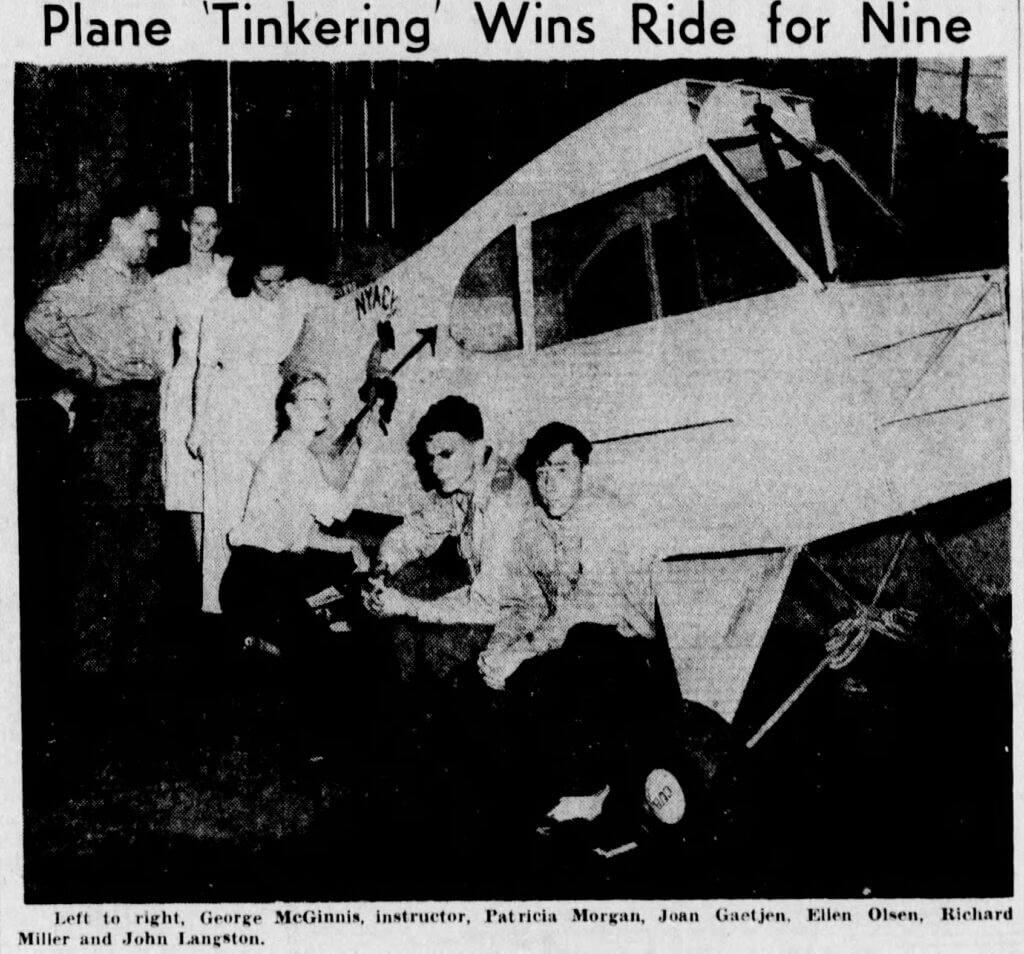
- Nyack Seaplane Base (1946–1951), Main Street
Two ex-P-47 pilots launched a seaplane training center here, operating Piper J3 Cubs from the Hudson. The facility shared space with the ferry dock. A 1950 storm damaged the dock, and a year later, a 1940 Pontiac crashed into the hangar. The base didn’t survive.
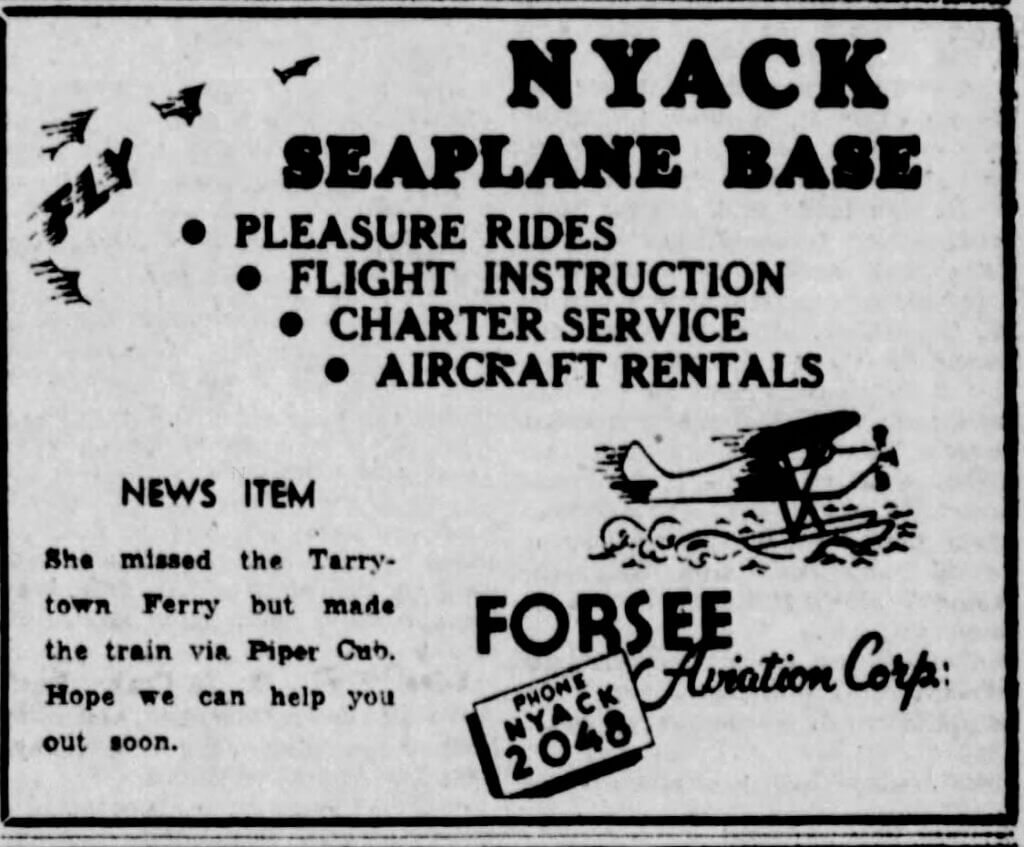
- Tri-Motor Strip (pre-WWII), Greenbush Road
This short-lived strip offered sightseeing flights in a Kinner Bird biplane. It sat on the east side of Route 303, across from the old Nyack Drive-In.
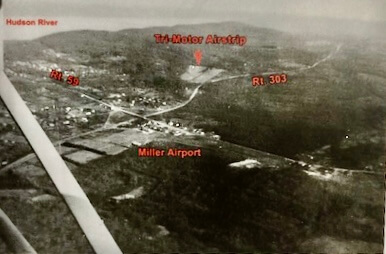
Miller Airport Also Sold Crosley Cars
Innovation didn’t stop with planes and a Milk Bar. The Millers opened a Crosley dealership inside one of their buildings. These quirky cars were ahead of their time—compact, affordable, and the first U.S. vehicles with disc brakes and the first to use the term Sport(s) Utility. The Hot Shot model even qualified as America’s first postwar sports car.
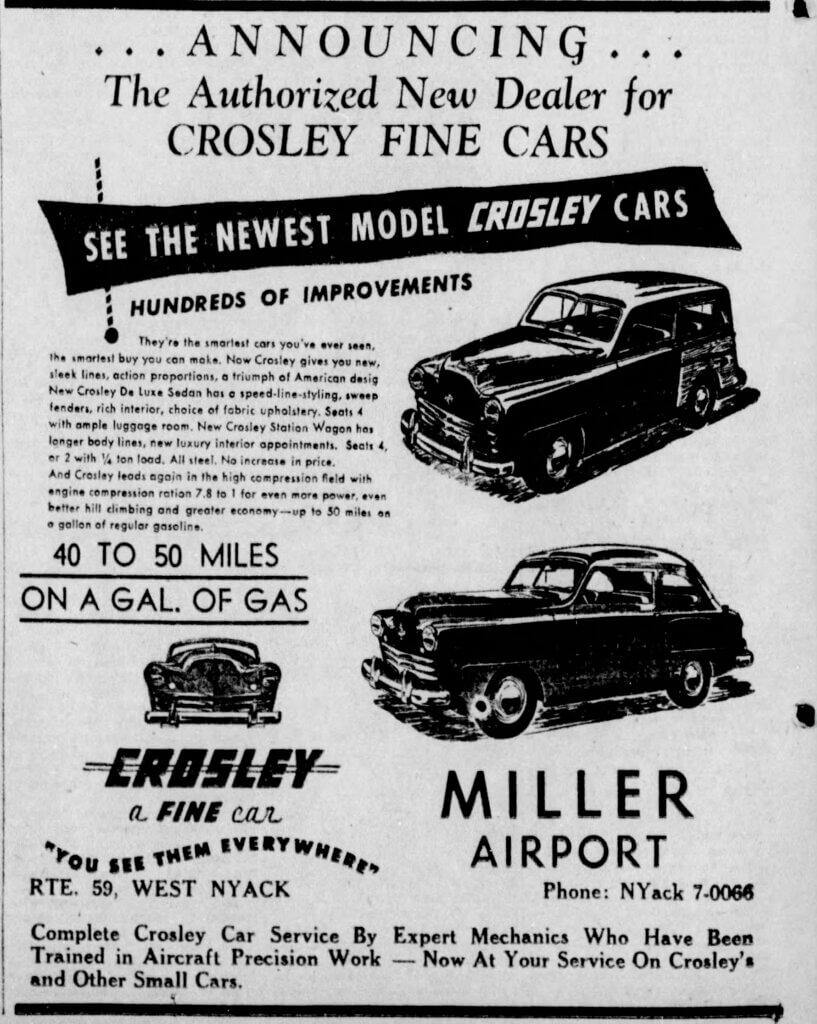
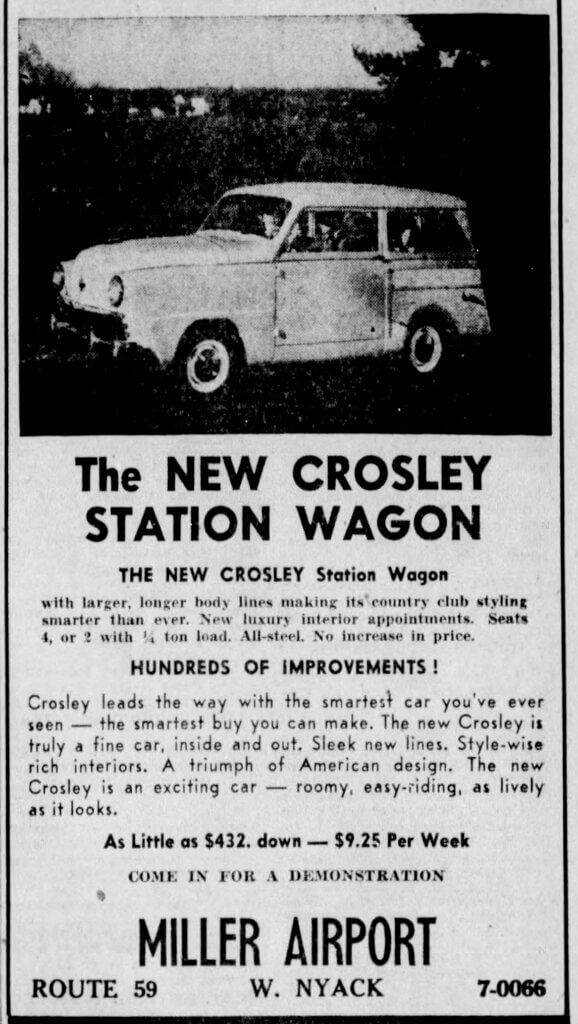
But the public wasn’t ready. As Detroit churned out ever-larger vehicles, the Crosley’s charm faded. The company shut down in 1952. Still, the Millers stayed in the car business. In one colorful incident, a man from Staten Island flew into Miller Airport and drove out—having traded his plane for a new car.
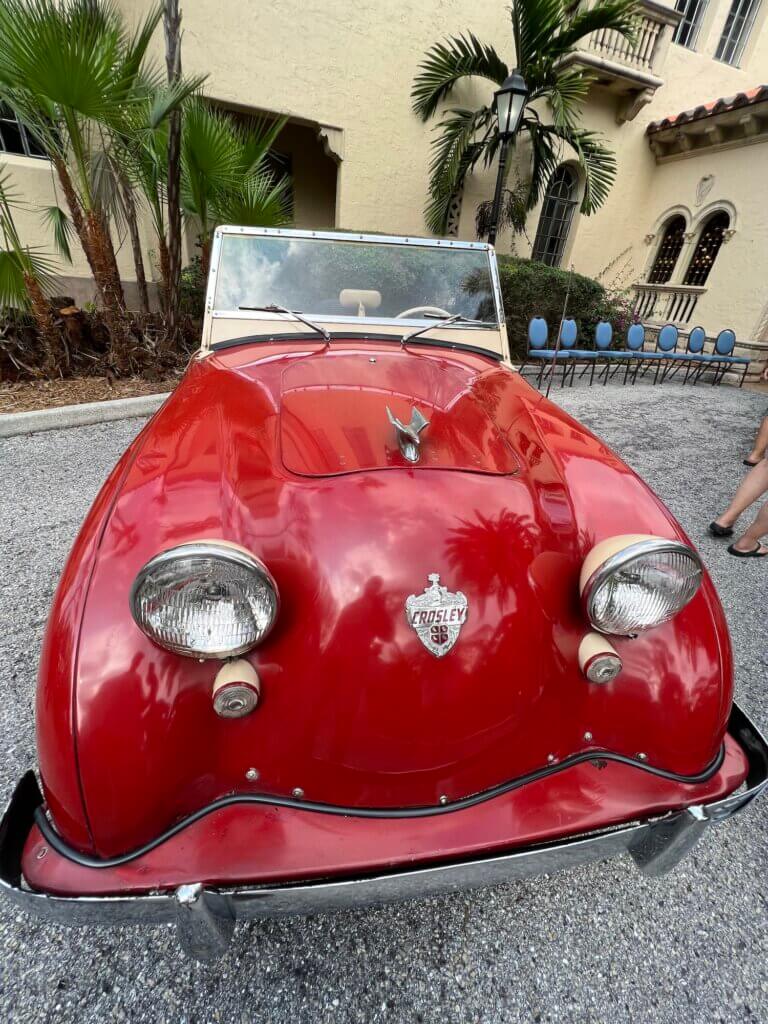
Airport Flooding
Locals may not know the history of the Greenbush swamp through which Route 59 passes south of the Palisades Mall, but they are familiar with occasional flooding. Flooding was once much worse. The Miller Airport experienced frequent floods. Over two feet of water covered the field in 1952. Fishermen in boots caught 15-20 pound carp that washed in from the Hackensack River.
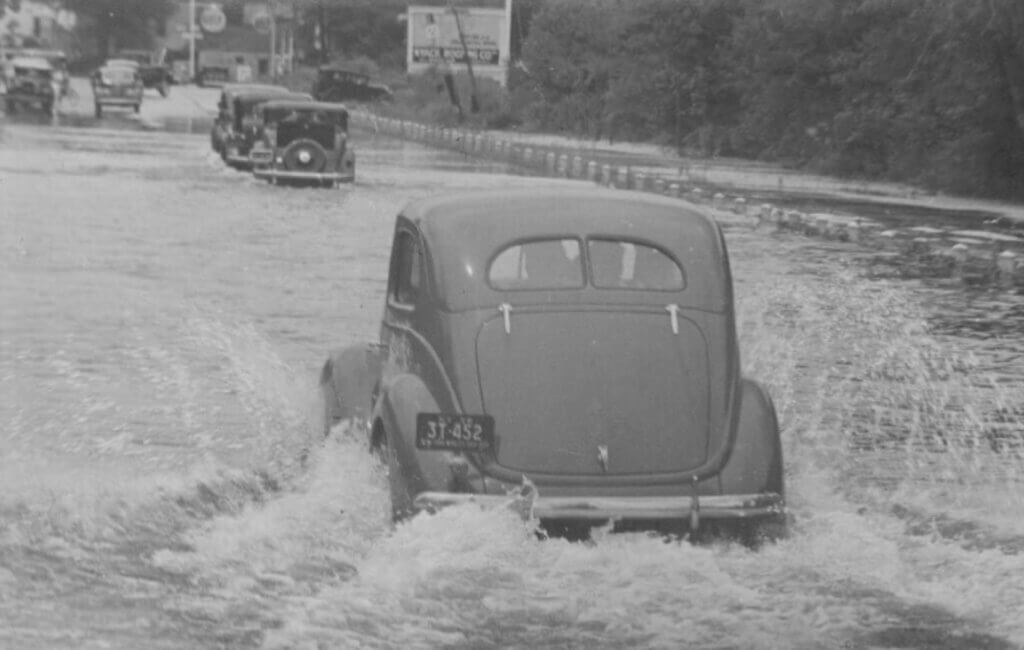
Zoning Issues
Just like today’s debates around the Palisades Mall, zoning was a hot topic back then. Miller bought the original dairy property near the cloverleaf in 1935 and acquired adjoining swampy land in 1937 and 1946. With town approval, he filled the area using construction debris—not household garbage—making the airport expansion possible.
“People called me crazy when I spent so much time to fill up the swamp.”
Garret Miller Sr.
In 1950, 38 Greenbush Road residents filed a lawsuit against the township’s zoning for a commercial airport. The case sparked fierce debate.
Airport Closure
By the early 1950s, the airport faced mounting challenges. In 1950, a fire destroyed the mechanics shed and showroom building. A year later, the GI Bill that had funded many flying lessons came to an end. With local opposition growing louder, the Millers shut down the airport for good in January 1952 when a judge denied their zoning application. They were also denied the use of property as a drive-in theater. On July 4, 1952, Al Morris and Rick MacVicar flew the last plan out of the airport.
Family Tragedy Long After the Airport Closure
Gary and Howard Miller were more than twins—they were partners in flight. Gary continued to teach aviation after the airport closed. Howard pursued painting, focusing on watercolors. Tragedy, however, would follow them both.


Photo of Gary Miller and a painting by Howard Miller, courtesy of his son David Miller.
In July 1967, Howard and his wife Edna crashed in Long Island Sound while flying from Ramapo Valley Airport to Montauk. Their bodies were recovered a week later.
In 1984, Gary died in a crash with a student, John Palermo, shortly after takeoff from Ramapo Valley Airport. Two of their sons also passed away young: Phillip Miller died in a car accident, and Garret Miller III in a motorcycle crash.
What If
The closing of Miller Airport coincided with the rise of the Tappan Zee Bridge and the Thruway—projects that would cut directly across the Miller property. West Nyack was changing fast. In just a few years, farms, dairies, and airstrips gave way to housing developments and shopping centers.
Had things gone differently, the short-lived Miller Airport might have grown into a regional hub—perhaps even Rockland’s answer to Westchester County Airport. But in the end, it joined the long list of vanished places whose stories still echo faintly, if you know where to listen.
Mike Hays lived in the Nyacks for 38-years. He worked for McGraw-Hill Education in New York City for many years. Hays serves as President of the Historical Society of the Nyacks, Vice-President of the Edward Hopper House Museum & Study Center, and Upper Nyack Historian. Married to Bernie Richey, he enjoys cycling and winters in Florida. You can follow him on Instagram as UpperNyackMike.
Editor’s note: This article is sponsored by Sun River Health and Ellis Sotheby’s International Realty. Sun River Health is a network of 43 Federally Qualified Health Centers (FQHCs) providing primary, dental, pediatric, OB-GYN, and behavioral health care to over 245,000 patients annually. Ellis Sotheby’s International Realty is the lower Hudson Valley’s Leader in Luxury. Located in the charming Hudson River village of Nyack, approximately 22 miles from New York City. Our agents are passionate about listing and selling extraordinary properties in the Lower Hudson Valley, including Rockland and Orange Counties, New York.


